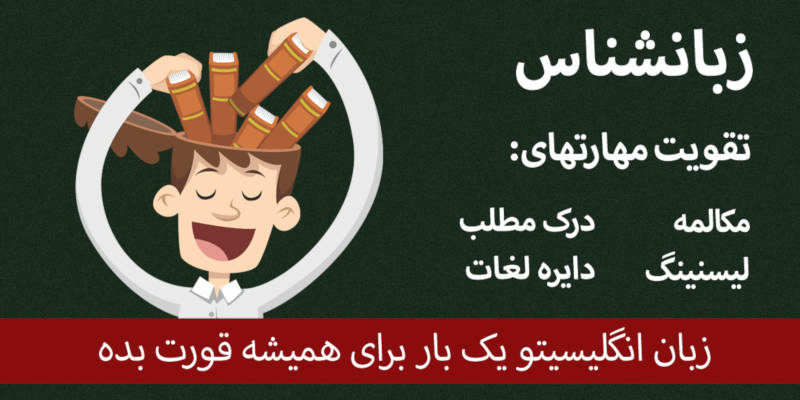سرفصل های مهم
نطق دوم
توضیح مختصر
به قسمتی از یک نطق گوش دهید.
- زمان مطالعه 0 دقیقه
- سطح خیلی سخت
دانلود اپلیکیشن «زبانشناس»
فایل صوتی
برای دسترسی به این محتوا بایستی اپلیکیشن زبانشناس را نصب کنید.
ترجمهی درس
متن انگلیسی درس
Lecture 2 - Interglacial Periods
Narrator: Listen to part of a lecture in an environmental science class.
Professor: I’d like to take you back about 11 thousand years ago when Earth entered the latest interglacial period. Interglacial periods are, typically periods of time between Ice Ages, when the climate warms, and the glacial ice retreats for a time, before things cool off again and another Ice Age begins. And for over the past several million years, Earth’s sort of default climate has actually been Ice Age, but we have experienced periodic regular thaws, and the last one, the one we are in now, started about 11 thousand years ago.
Now, the typical pattern for an interglacial period, and we have studied several, is that the concentration of carbon dioxide and methane gas actually reaches it… its peak, that is, there is the most carbon dioxide and methane gas, uh, greenhouse gases in the atmosphere just after the beginning of the interglacial period. And then, for reasons which are not entirely clear, the concentration of greenhouse gases gradually goes down.
Now, the climate continues to warm for a while because there is a lag effect. But uh, gradually as the concentration of greenhouse gases goes down, Earth starts to cool again, and eventually you slip back into an Ice Age.
Um, however, for the latest interglacial period, the one we are in now, this pattern did not hold, that is, the concentration of carbon dioxide and methane dipped a little bit after, uh, uh, after peaking at the beginning, near the beginning of the interglacial period, but then it began to rise again. Um … What was different about this interglacial period than the other ones?
Well, one of the big differences is human activity. People began to raise crops and animals for food instead of hunting for them. This is the agricultural revolution.
And it began to happen in the earliest stages about 11 thousand years ago.
Now, scientists have tended to regard … the … uh … agricultural revolution as a beneficiary of the … uh … fortuitous shift in climate. However, some new theories of climate, new theorists of climate have proposed that perhaps humanity was having an effect on the climate as far back as the beginnings of the agricultural revolution.
When you grow crops and uh, pasture your animals, one of the things you do is you cut down the forests.If you cut down the forests, when you burn the trees for fuel and don’t replace them with other trees, or when you just leave them to rot and don’t allow other trees to grow, you end up with a lot more carbon in the form of carbon dioxide getting into the atmosphere.
Um … another gas associated with the spread of agriculture is methane.Methane forms in large concentration above wetlands, and as it turns out, the cultivation of certain grains creates vast areas of artificial wetlands, and probably drastically increases the amount of methane getting into the atmosphere, over and above what would be there.
So, um… agriculture, the … the spread of agriculture, you know we are talking over thousands of years, um… but this could very well had a profound effect on the composition of Earth’s atmosphere.It’s kind of ironic to think that absent that effect, it maybe that we would be heading into an Ice Age again.In fact, back in the 1970s, a lot of theorists were predicting that, you know, the climate would start to cool and we’d slowly enter into the new Ice Age.And then they were puzzled as to why it didn’t seem to be happening.
Umm… now, what are the implications for the future? Well, um… it is a little tricky. I mean, you could say, well, here is an example of … um … human activity, the agricultural revolution which actually was beneficial, we altered the climate for the better, perhaps, by preventing an Ice Age.
But then industrialization, of course, has drastically increased the amount of carbon dioxide that humans are putting into the atmosphere, the burning of fossil fuels tends to put a lot of CO2 into the atmosphere. Um… so we are entering into uncharted territory now, in terms of the amount of carbon dioxide, the concentrations of carbon dioxide that are now being put into the atmosphere as a result of industrialization and the use of fossil fuels.
مشارکت کنندگان در این صفحه
تا کنون فردی در بازسازی این صفحه مشارکت نداشته است.
🖊 شما نیز میتوانید برای مشارکت در ترجمهی این صفحه یا اصلاح متن انگلیسی، به این لینک مراجعه بفرمایید.
